Former Zakoji Omi School (2)
After the tour of the interior of the former Omi School, I went outside. This is the back side of the building.
As I wrote in a previous article, this side has a mezzanine floor, so it is a three-story structure. However, the first floor has no windows at all.
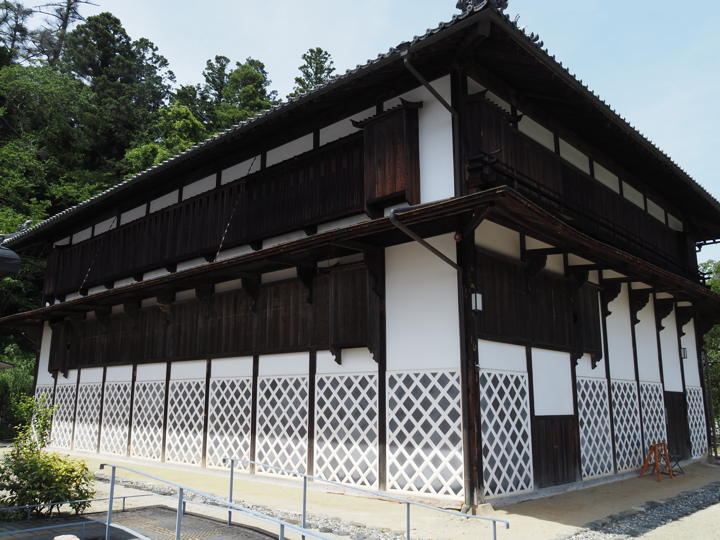
I went to tell the person at the International Marionette Museum, who opened the building for me, that I had finished my visit.
There, I bought a booklet titled “The Revived Stage School" published in 2003.
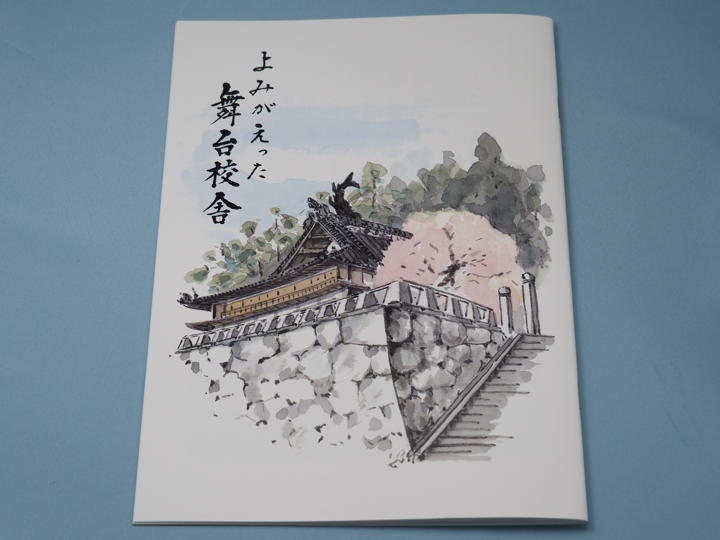
I passed by the front of the stage. I could see the lights were on inside.
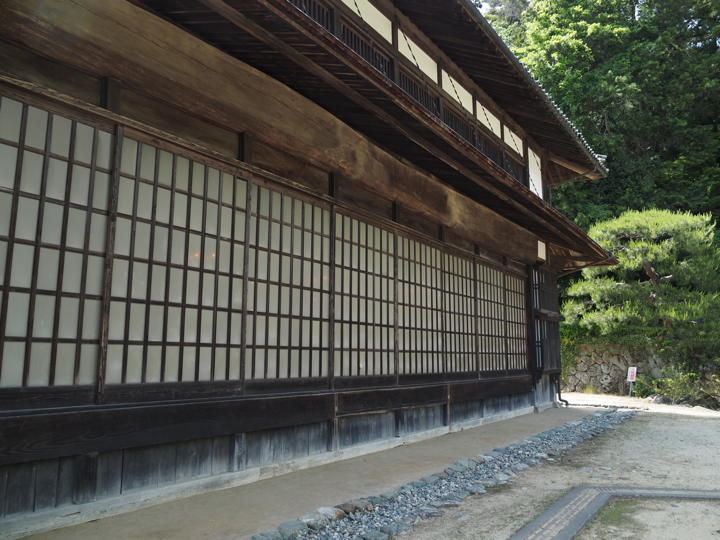
According to the “Revived Stage School" a performance of the Oshika Kabuki was held on this stage in April 1997, when the conservation and restoration work was completed.
I sometimes disagree with the practice of restoring buildings to their original state when conservation and restoration work is carried out, because I feel that it erases the accumulation of history. However, I think it is best if the building can continue to be used rather than just preserved.
Now, I did not know of its existence at the time, but shortly after this I was able to find the entrance part of Omi School.
I left former Omi School and walked toward the Moto-Zenkoji Temple. On the east side of the school, there is a building called “Iida City Omi-no-sato Exchange Center, Omi-no-yakata" and there was an information board at its entrance.
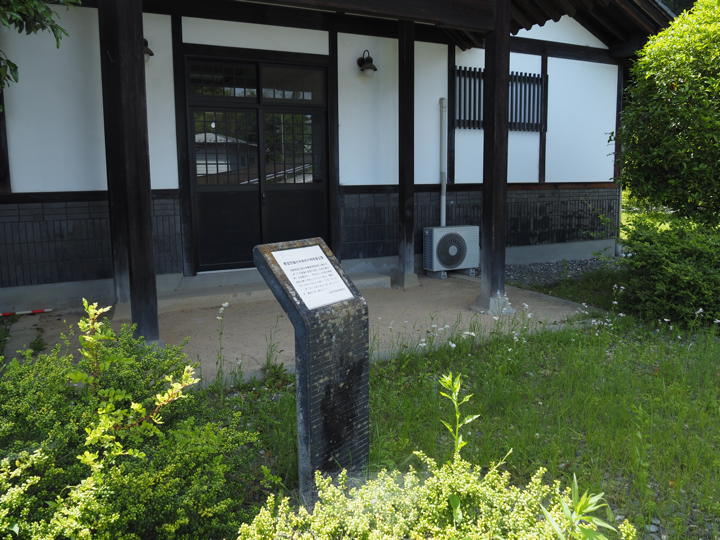
As I approached, I saw a sign that read, “Entrance to the Prefectural Treasure : Former Zakoji Omi School Building".
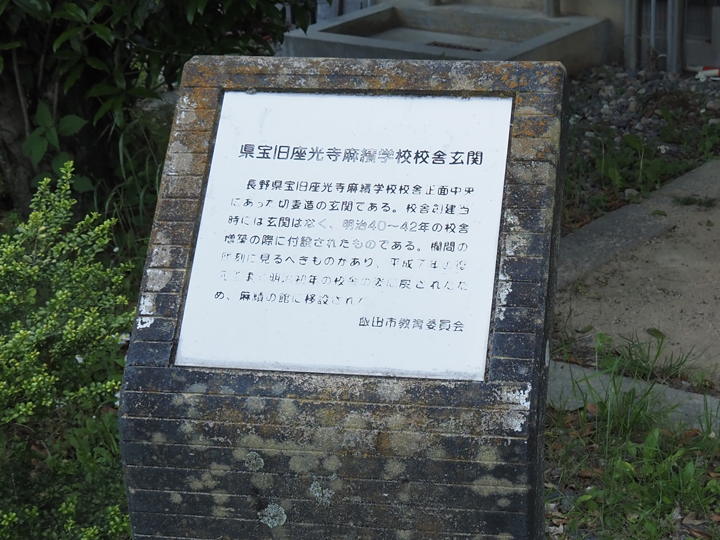
“The gabled entrance was located in the center of the front of the building of the former Zakoji Omi School, a Nagano Prefecture treasure. There was no entrance when the school was built, and it was laid out when the school building was expanded in 1907-1909. The carving on the transom is worth seeing. It was moved to the “Omi-no-yakata" in 1995, when the school building was restored to its original appearance of early years of Meiji era.
Iida City Board of Education"
The entrance was relocated here, although I fear the letters are fading.
This is the entrance of the former Omi School.
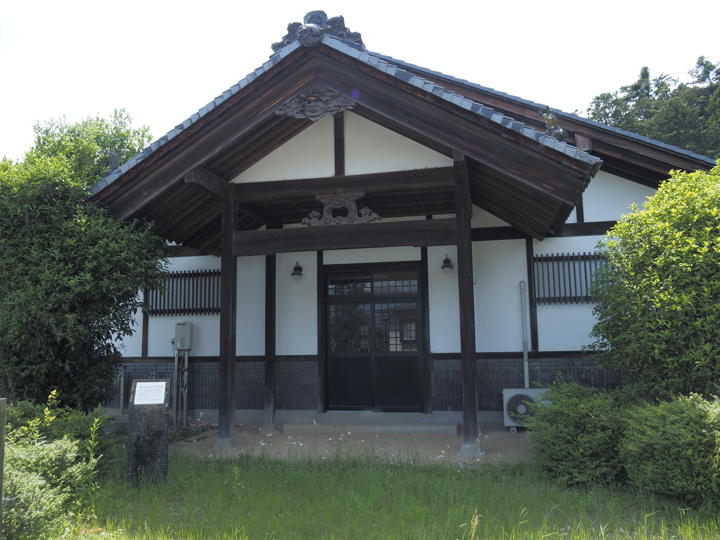
This is how they decided to preserve it. If possible, I would like them to rework the fading letters to convey the record.
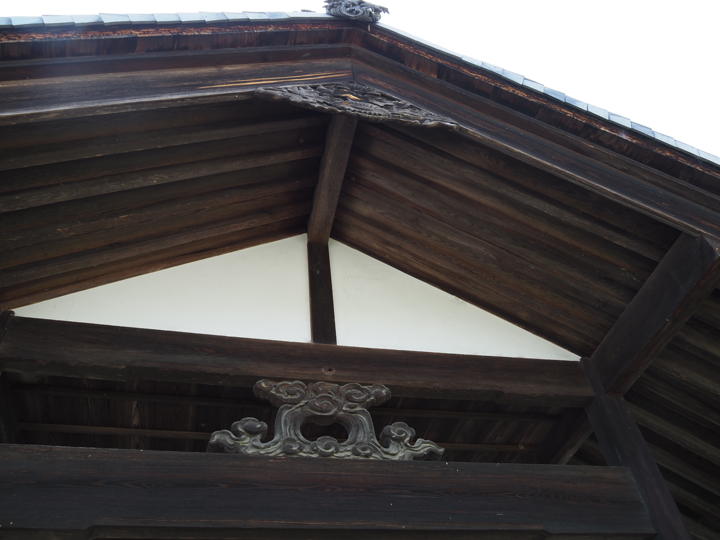
Now, the following is the research I did after I came home.
The gate that is kept in the former Omi School.
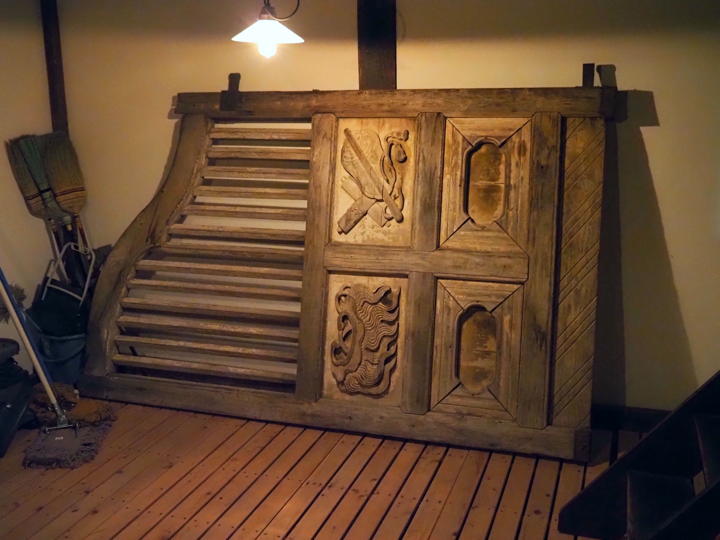
When I looked at the “History of Zakoji School" published in 1965, I found the gate in a photo taken on the 90th anniversary of the school’s opening.
Since I could not cite the photo, I drew the gate in my imagination on the photo I used last time. It is an imaginary drawing, so it is not an exact reproduction.
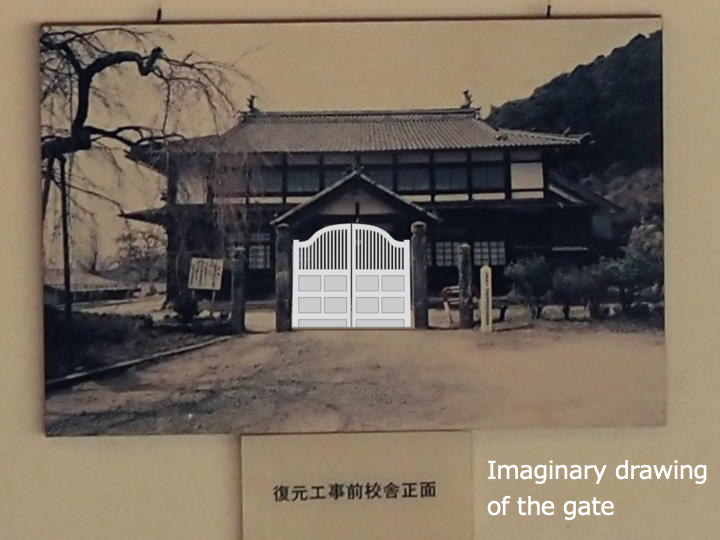
Note that the gatepost is also no longer in this position. It seems to have been moved to either side of the stairs leading up to the site from the road below.
***
Lastly, I will summarize the changes in school buildings and names.
The diagram is a simplified version based on the one “History of Zakoji School". It is not an exact drawing and should be viewed as a rough sketch.

In 1872, before the construction of the school building, Zakoji Village opened the 32nd Elementary School at Nyoraiji Temple.
In 1873, the name of the school was changed to Omi Elementary School in accordance with the school system. Construction of the new school building began in September of that year.
Classes in the new school building began in April 1874.
In 1875, six villages including Zakoji merged to form Kamisato Village. The name of the school became Omi School.
In 1876, Chikuma Prefecture notified the school to change its name because there was a school of the same name in another area. So the name was changed to Shima School.
Thereafter, the villages were reorganized, then in 1889, a new municipal system was put in place, and Zakoji Village was separated. Since then, Zakoji Village continued to exist until 1956, when it was merged into Iida City.
The name of the school was changed to Zakoji Elementary School.
In 1894, senior class was established and the school became Zakoji Senior Elementary School.
In 1895, the school building was moved a little to the east, to build a rain gymnasium. The interior classroom layout was also changed. In addition, a weeping cherry tree was planted in front of the school building. This cherry tree still stands in front of the building. (*)
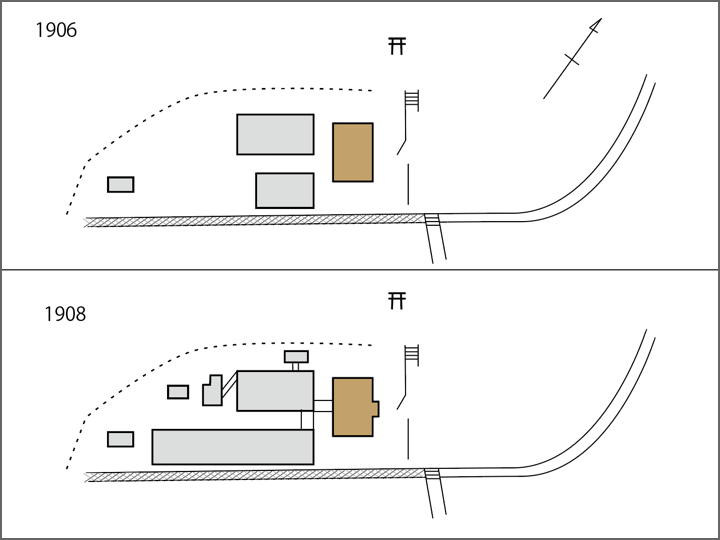
Although not shown in the diagram, the first expansion of the school building took place in 1898. The gymnasium was relocated, and a sewing room and teachers’ residence were constructed. In addition, a large stone wall was built on the south side of the school to expand the school site.
The second expansion project began in 1907.
A new two-story school building (8 classrooms) and a gymnasium were built. The main entrance of the school building was added.
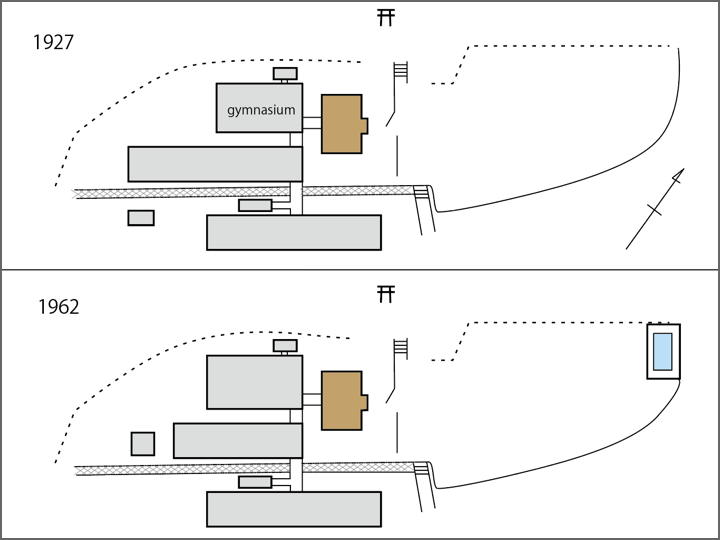
The third expansion of the school building started in 1927. The schoolyard was expanded and a new school building was built on the south side. The south school building was built in the foot of the large stone wall, and the second floor of the south school building was connected to the first floor of the north school building by a corridor.
In 1937, a new gymnasium was constructed by cutting down the hill behind the school.
In 1941, the school was renamed Zakoji National School.
After the World War II, it became Zakoji Elementary School in 1947.
In 1956, a swimming pool was completed, and in the same year, the school became Iida Municipal Zakoji Elementary School due to the merger of city and villages.
This is a aerial photo taken in 1976.
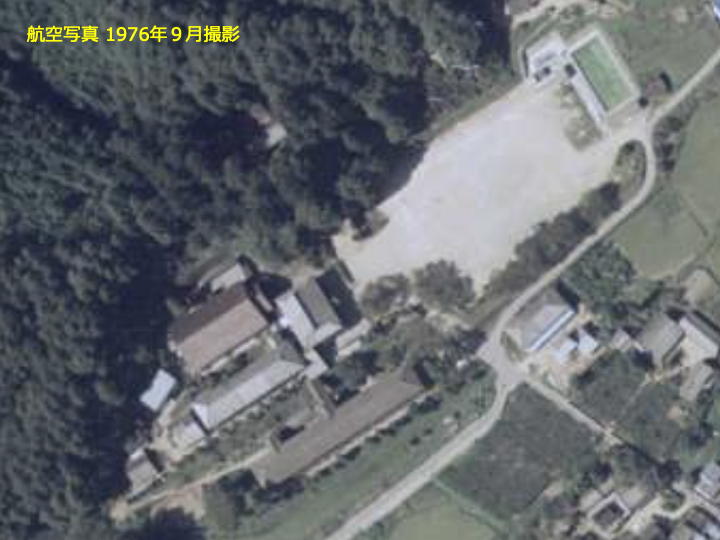
Zakoji Elementary School moved to a new school building built at a different location in January 1984.
The old school building ended its history as a school. In the same year, all buildings except for the main building and gymnasium were demolished.
The main building was designated as a Nagano Prefecture Treasure in 1985, and preservation and restoration work was planned.
Work began in 1995 and was completed in 1997.
A community center and the Iida City Zakoji Branch Office were built on the south of the school site.
With the construction of the Marionette Museum, which opened in 1998, the school buildings other than the main building disappeared.
(*) [Postscript] (2023.08.18)
The school history mentioned the tree-planting, so I have included it as it is. However, I found an entry on the official website of Iida City, which states, “the school logbooks show a description of “cherry trees in front of the school in full bloom" when the students entered the school in 1895″. This means that the cherry trees must have been of some size at that time. The cherry tree in front of the school building is designated as a natural monument of Iida City, but the Iida City government states that “there are various theories as to when it was planted".
Some tourist websites say that the tree is “350 years old," but I do not know the basis for this statement.
[Reference] (written in Japanese)
“Zakoji School History" (Zakoji Elementary School in Iida City, Zakoji Elementary School 90th Anniversary Commemorative Project Executive Committee/1965)
“The Revived Stage School" (Omi-no-sato Promotion Committee, Iida City Board of Education / 2003)
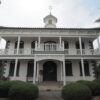
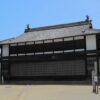
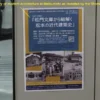
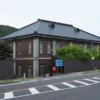
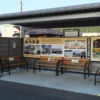
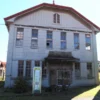
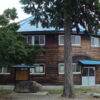
Discussion
New Comments
No comments yet. Be the first one!